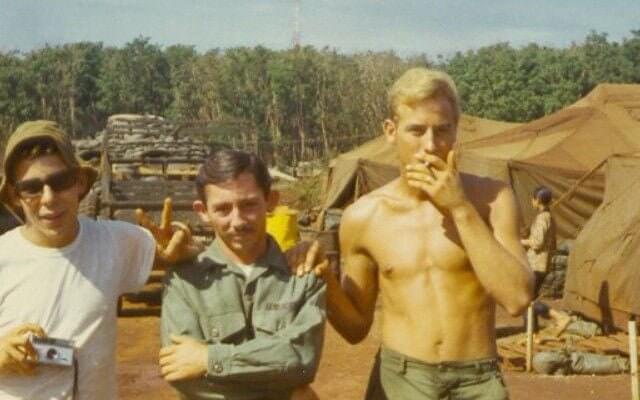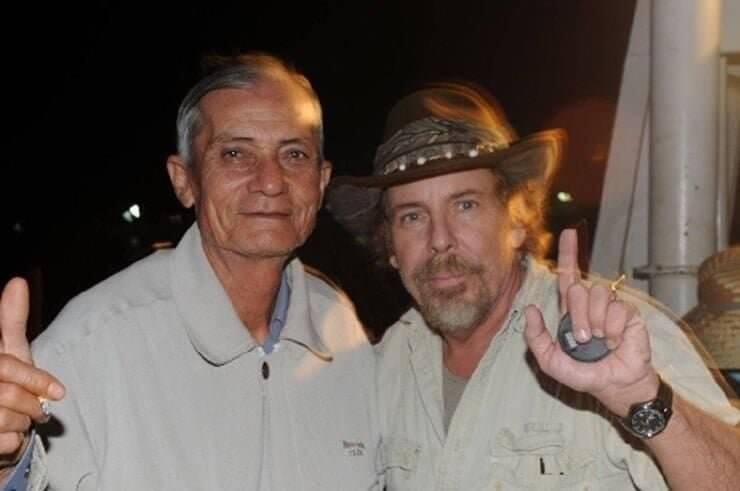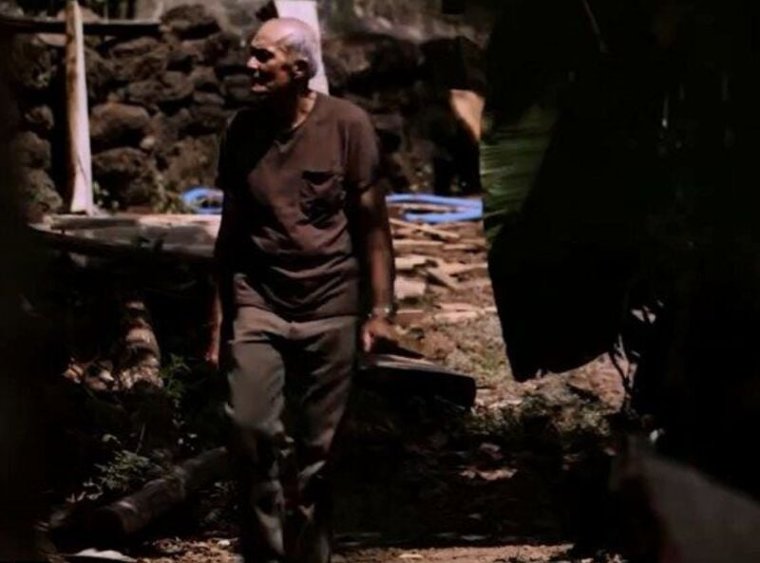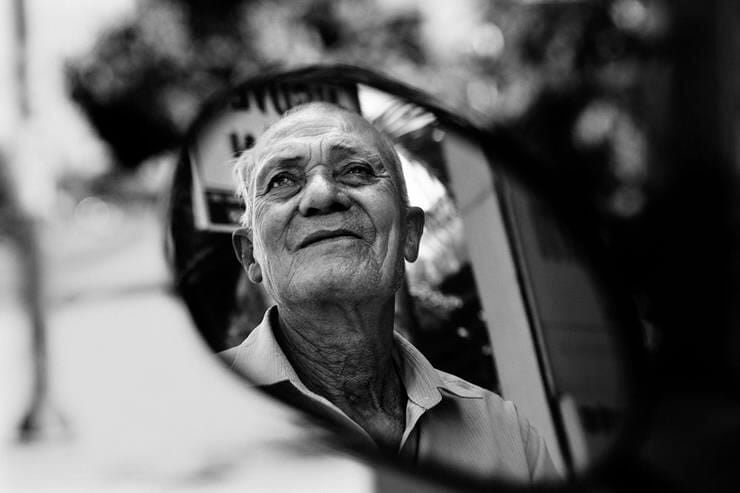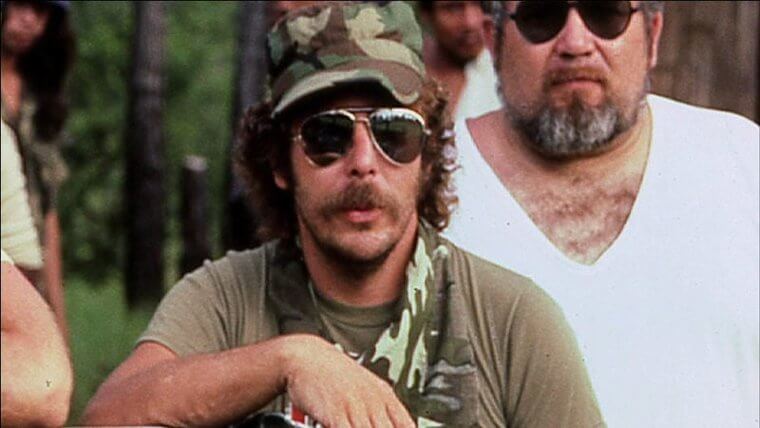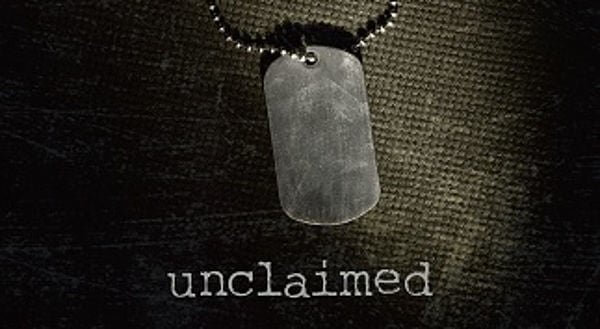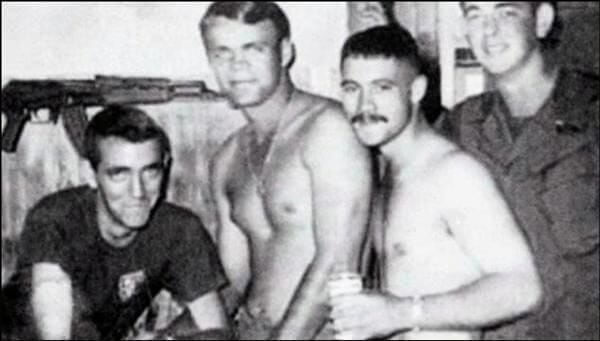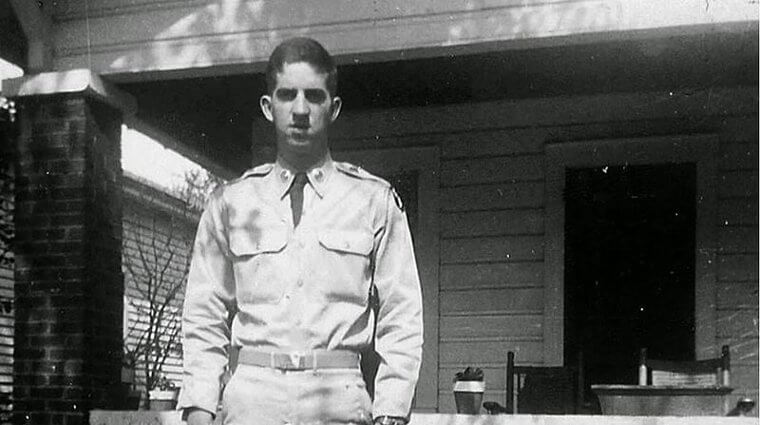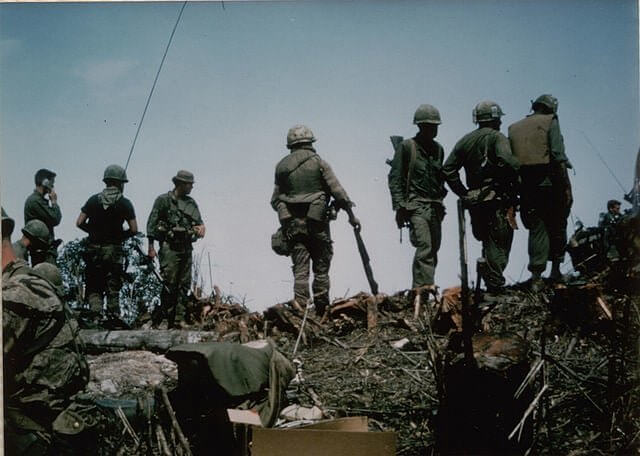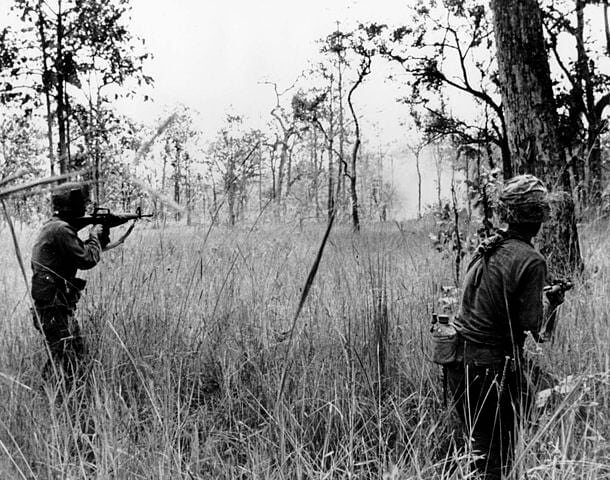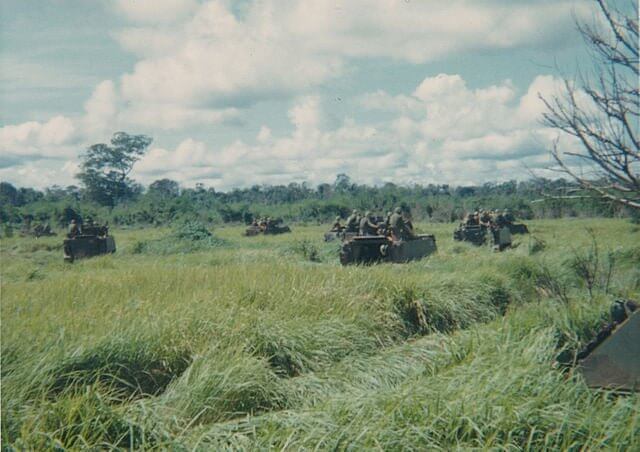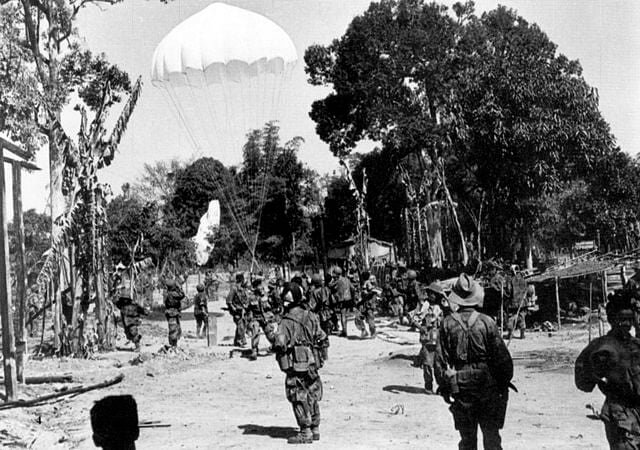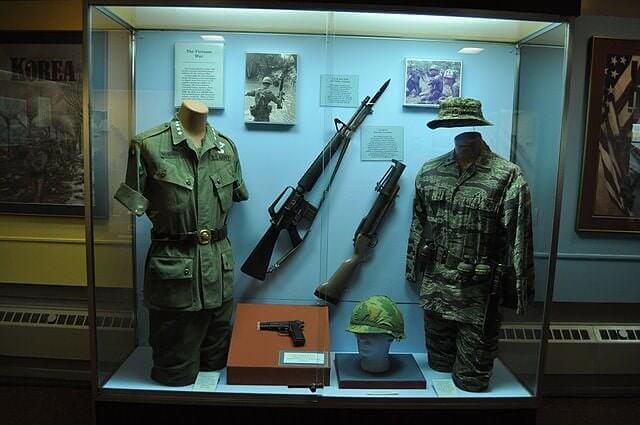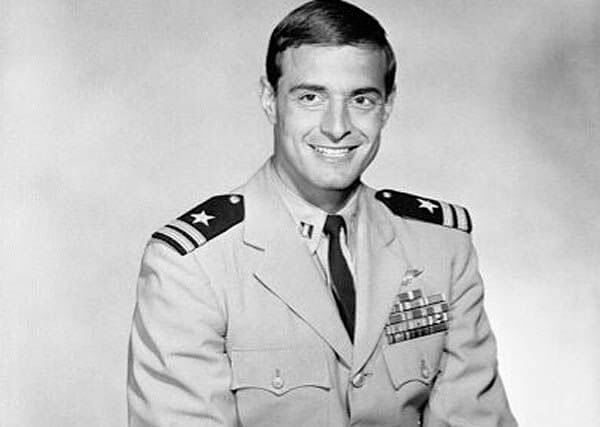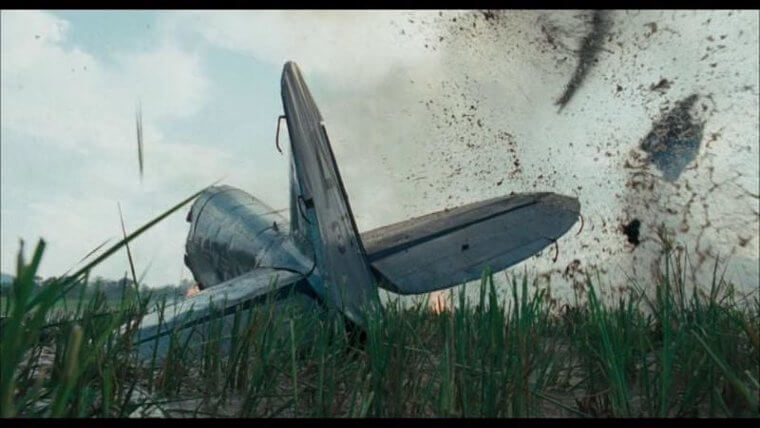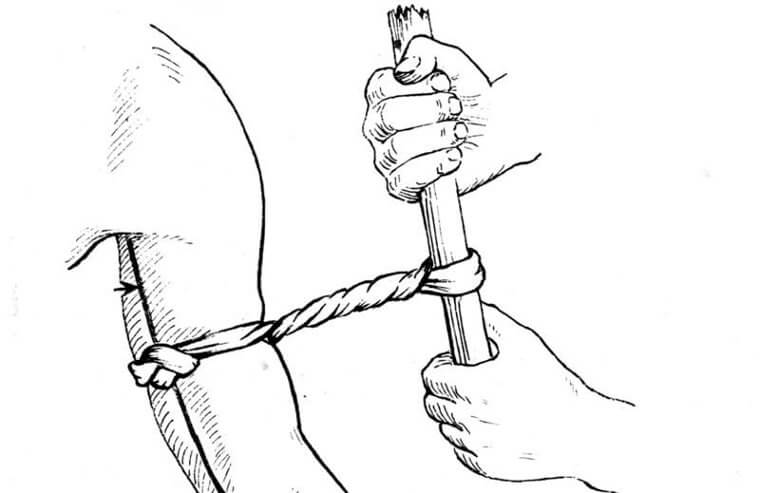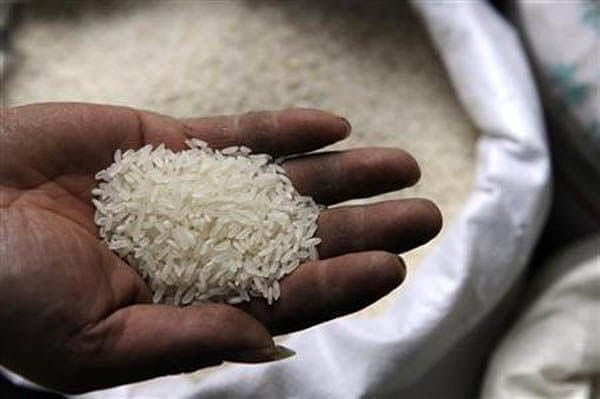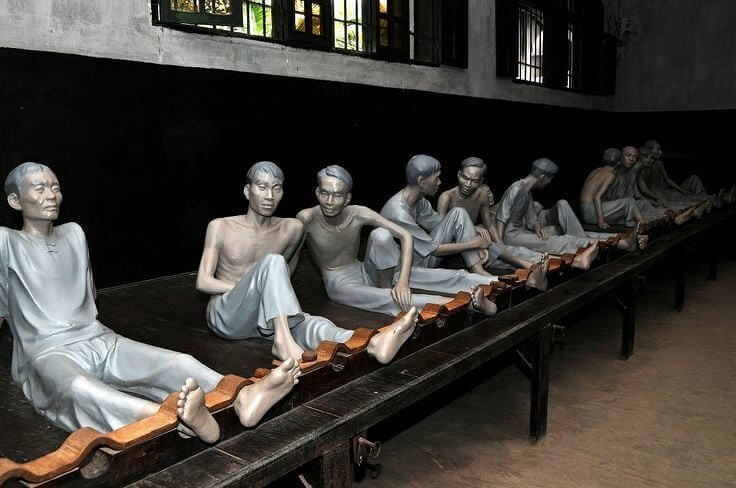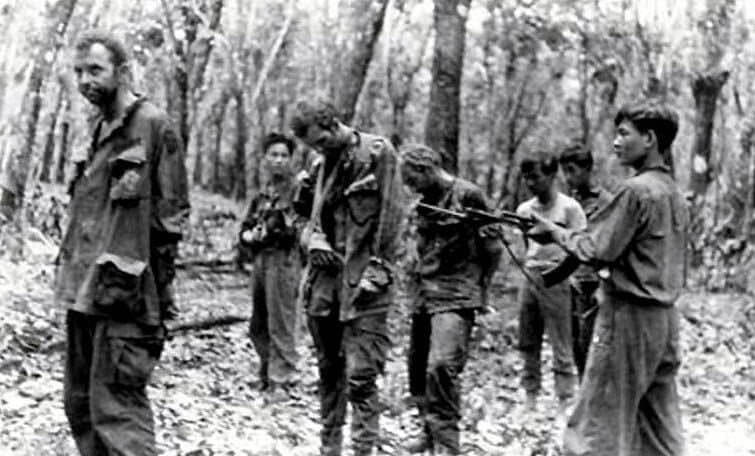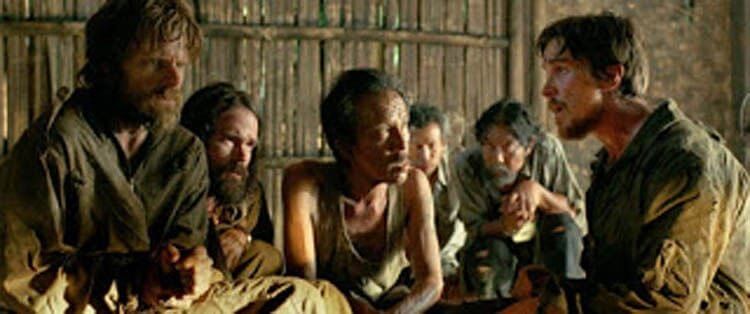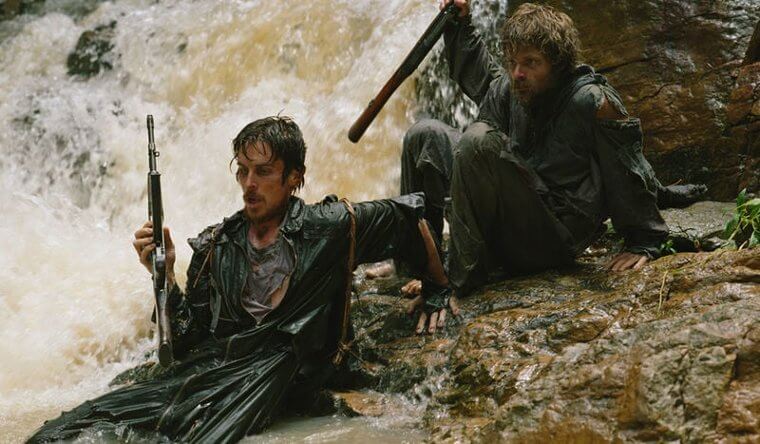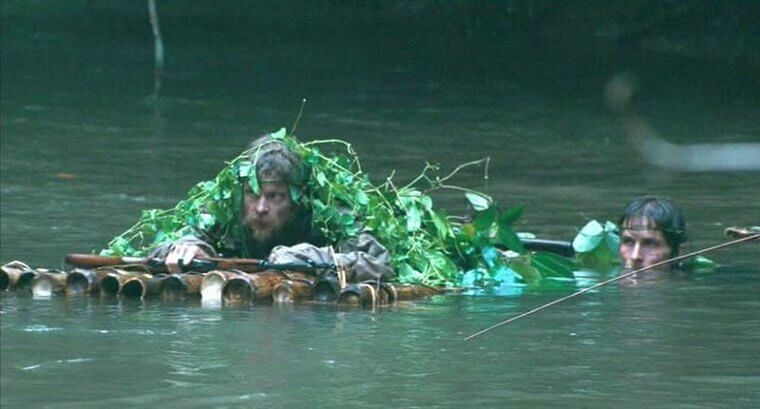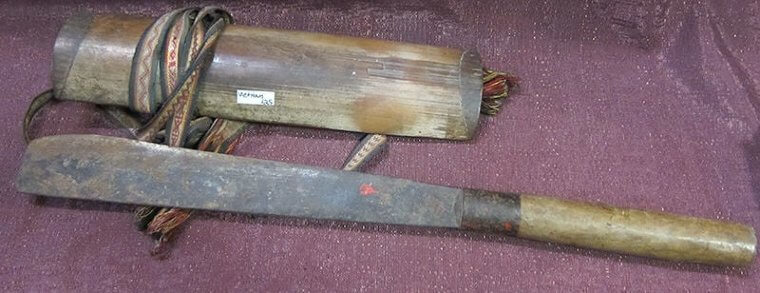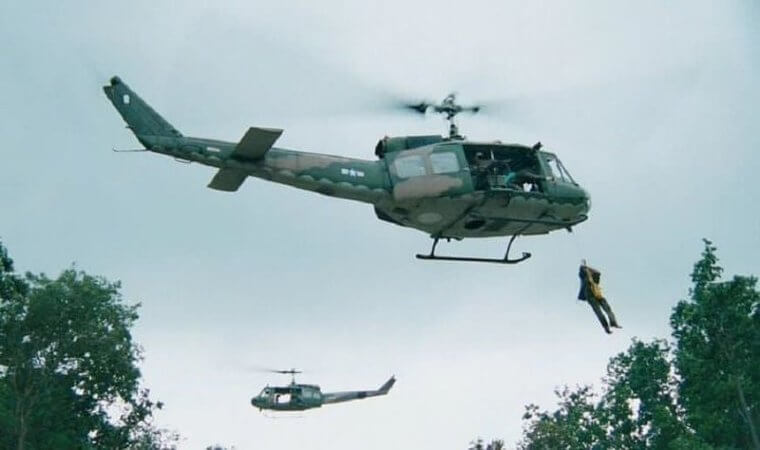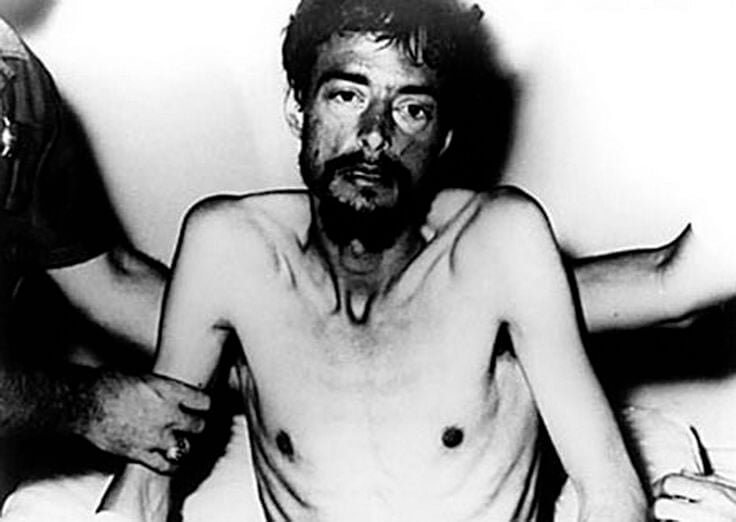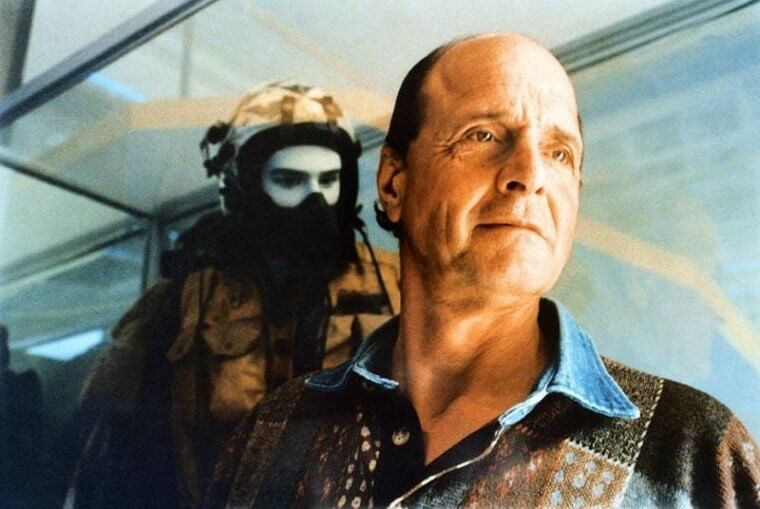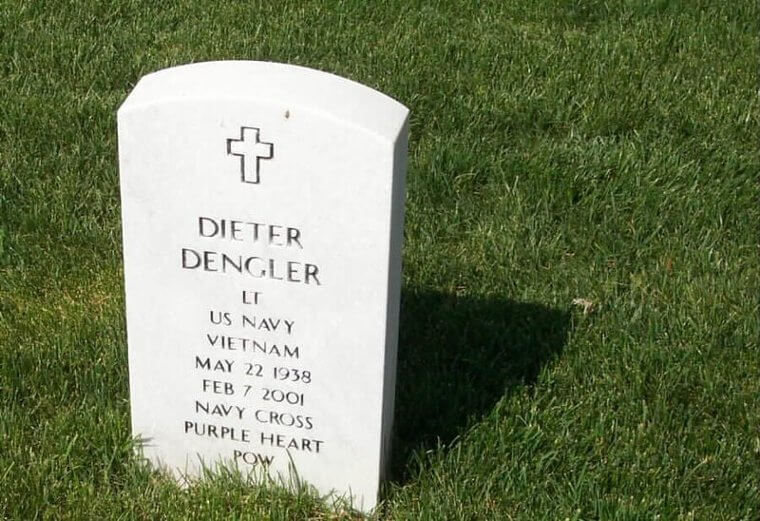The Vietnam War is one of the most controversial wars in the history of the United States. Not all soldiers returned home, and apart from those that died on the battlefield, many actually became prisoners of war or the so-called POWs. If you were captured by the Vietcong, your chances of survival were at a minimum. You were starved and tortured to reveal any information you had. If they particularly disliked the prisoner, they would execute them. Make no mistake, those were statistically the rare cases. By the end of the war, back in 1975, most of the POWs were actually released and were given the chance to return home. Many never made it back and went missing. Those who went missing were simply presumed killed in action (KIA), and that was the end of the story. One of those soldiers was Special Forces Green Beret Master Sgt. John Hartley Robertson. It was presumed that he died in action, or was killed in captivity, but he actually started a new life in the jungle after he was released. It was not until 2008 that he was finally found and that his story finally surfaced. However, nothing is as it seems, and the same can be said for his story.
A Rumor
In 2008, a rumor went around that one of the American soldiers from the Vietnam war was still alive and kicking in Laos. Tom Faunce was a soldier who had served two tours in Vietnam and after the war, he went on a humanitarian mission to Cambodia, and it was there that he overheard this rumor.
The lost American soldier apparently survived a helicopter crash during the war and managed to somehow stay alive after that, as well. Faunce was curious to find out if the soldier was Special Forces Green Beret Master Sgt. John Hartley Robertson.
Prison Escape
Faunce found out that the mystery soldier was the Green Beret named John Hartley Robertson. Robertson was in-fact in the helicopter when it crashed, but he somehow managed to survive. He was, however, injured and got sent to the North Vietnamese Army prison.
Robertson was, however, not released from the prison. He escaped and his escape path led him to South Vietnam, and it was there that he started going by the name of Dang Tan Ngoc.
Home Visit
Faunce went to meet Robertson in person, in order to hear his story of escape and survival. The man that he met was very thin, and about six feet tall. At the time he was already sporting gray hair. Robertson welcomed Faunce to his home without any issue.
He knew why Faunce was there, and he had no issue in telling him the story. However, it was his wife, who he met while in the North Vietnamese Army prison, that needed much convincing. She was a nurse and Robertson's caretaker in the prison. When Faunce stepped inside, she immediately started yelling facts about Robertson, her husband: “He’s not American. He’s Vietnamese!” Robertson, of course, calmed down his wife and took her aside, and after a brief conversation, they both returned. Robertson, of course, offered an explanation for his wife’s behavior.
The Secret Career Path
His wife was still very worried that she, or her family, would be prosecuted for the things they did back in the day. And by the things, we mean smuggling a Prisoner of War out of the prison and over the border. Faunce was all ears to hear the stories from both Robertson’s wife and Robertson himself.
According to him, Robertson graduated from high school in Alabama and joined the Green Berets soon after. He took on the training to become a paratrooper, but his career took a drastic change when he was recruited by the CIA. He had a lot of blood on his hands from those times. He helped them organize and bomb North Vietnam. He was, however, not the only one. It was a whole team of Special Forces that conducted search-and-destroy missions both in Laos and Cambodia.
Shot Down
The whole team was, undoubtedly, good at what they were doing. However, that did not help them in the slightest when their helicopter came under heavy enemy fire when they were flying over the South Asian jungle. As the helicopter began to spiral down, most of the soldiers in the team were ejected out of it. Robertson, however, got stuck on it and was unable to jump out.
What seemed like an unlucky circumstance was actually the lucky circumstance, because he survived. He was injured pretty bad though and was transported to the Vietcong hospital as soon as he was discovered. As we have mentioned before, it was there where he met his wife. After the escape and life with a new identity, he began his life as a simple farmer in Laos.
Making the Return
Just like anybody would, Robertson too wanted to know what happened to his family back in the US. Faunce did not know the answer to that particular question but told Robertson that he should visit the United States embassy and tell them his story. He would get fingerprinted, as to confirm his identity, and it would be much easier for him to return back to the US, and visit his family.
However, nothing happened until 2012, when Emmy Award-winning director Michael Jorgensen heard about the story and sent someone to bring Robertson back. He wanted to reunite him with his sister, who had been waiting to see him for 45 years. Extraordinary details would be revealed once Robertson collaborated with Jorgensen.
The Documentary
Thanks to Jorgensen, Robertson not only returned back to his country but also had a documentary, titled Unclaimed, made about him. It was actually Faunce who told them the story and told them that they should make a movie about it.
The documentary was shot, and Robertson explained how they were shot down on that last mission, and how he was kept in a bamboo cage, and apparently tortured for a full year before he was given medical care. That was already strange enough, as he had never mentioned that before, but the strangest things were yet to come. Robertson only spoke in Vietnamese and did not remember his own birthday, or his children’s names.
The Backstory of Robertson
Being a great filmmaker, Jorgensen took all the steps necessary to gather as much information about John Hartley Robertson as possible, prior to filming anything.
In 2014 he was interviewed by the IndieWire.com and said: “I did a lot of research about this mission and the MACV-SOG Organization that the Pentagon put together in January of ’64. Then I tried to find everything I could about this missing man, and what was known about him. That was really a black hole. He disappeared; there are no files about this guy at all. There are a couple of statements by people who were in the air or on the ground when his helicopter went down, pretty minimal.”
The Strange Reunion
The reunion was not as easy as one might think. Jean, his sister, and her husband, along with their daughter Gail had to be flown from their home in Tuscaloosa to Canada, where he was. The last time his niece saw him was during her 10th birthday party. The big event happened on the 17th of December, 2012, when they were finally reunited after long years.
He struggled with English and had a translator help him out. However, it just did not feel right. He seemed like a totally different person than he was before, and skepticism returned. Was he really the person he was claiming to be or was he simply an impostor? Not long after that the fingerprint results came back that cleared everything up.
The Fingerprint Controversy
As you would suspect, taking all the strange things surrounding him into consideration, the fingerprints did not match those of John Hartley Robertson. Speculations surfaced that maybe he might have gotten his name wrong, and was actually yet another soldier that got lost in the war.
Faunce and Jorgensen, surprised by the results, wanted to test the man’s credibility by reuniting him with one of his arm colleagues, Ed Mahoney. He was very eager to meet Robertson and was really happy when he heard that he had, by the looks of it, survived the helicopter crash, and was alive and well. If he seemed different from his family, he would surely seem different to somebody he served with, right?
The Meeting
The pair met in a restaurant called the Dong Mai. They exchanged what was a rather awkward hug, and proceeded to sit down. As previously, Robertson appeared there with a translator that could translate Vietnamese to English and vice versa. However, something strange happened.
Even though the fingerprints disputed that he was the person he was claiming to be, Mahoney, who served with Robertson for a long time, undoubtedly believed that he was the actual Robertson. The whole situation only brought up more questions than answers for his family and there was only one thing that they could do to finally get their answer. They proposed a DNA test that Robertson accepted.
No DNA Test?
Before the documentary even made it live to the screens, Jorgensen told the media that even though the DNA test was agreed upon, it would not happen. The family actually retracted from their initial decision and decided not to test him.
It might seem bizarre to not want to know the truth, but that is what the family chose to do. As Jorgensen said: “Somebody suggested to me maybe that’s (because) the daughters don’t want to know if it’s him. It’s kind of like, that was an ugly war. It was a long time ago. We just want it to go away… I don’t know. What would compel you not to want to know if this person is your biological father?”
The Results
The documentary released and the family alongside the viewers were in the end convinced that the man was Robertson, despite all the controversial things that surrounded him. The family later revealed that the reason they did not want to do the DNA test was in case the man was proven not to be Robertson. They wanted to live with the belief that their father, brother, and uncle was still alive and well.
However, the DNA test was later on still conducted. And the result was quite surprising. Or not. Depends on who you were rooting on. The DNA tests had proven that the man claiming to be Robertson was in fact not him. Before the results were publicly released, his niece Gail Metcalf told the media: “The bottom line is even if the DNA test came back negative, he’s still proven to be an American. My mother will never believe he is not her brother.”
On Their Own Terms
The process of the DNA test was as follows. The man from Vietnam, claiming to be Robertson, had his blood drawn and compared to the DNA of his nephew who donated his hair for this test. To get the test done, the family actually had to start a GoFundMe project that was quite successful, and they managed to raise enough money to pay for the test.
As soon as the received the results they felt the need to share them with the public who made the test possible, and Robertson niece wrote on the page: “We have received the results of the [nuclear] DNA test, and sadly there was NOT a match. This is very disappointing. As my mother has said, we only want to do right by my Uncle John, and if that means exploring the possibility that the U.S. government has made a mistake or that the man claiming to be my uncle is actually another lost American and doesn’t know who he is, we intend to seek the truth on our own terms.”
Strange Government Behavior
Jorgensen actually tried to get as much help as possible from The U.S. government, but they were not very cooperative.
They were very secretive about everything and Jorgensen stated: “The contact that I worked with in the government was very deceitful. I think they were trying to steer us clear of even doing this story. As we were just about to finish the film, even before Tom’s team had found John’s sister – because they had a really hard time trying to find his relatives – the government had told us that they had gotten blood samples from a brother and sister and that they were doing DNA tests. That was totally untrue, his brother was dead at the time and his sister has never been contacted by the government.”
A Big Fat Liar
It took the media only one day after the documentary was published to figure out who the man actually was. The Independent reported that the man in the documentary was actually Dang Tan Ngoc. How did they know him, you ask? This 76-year-old Vietnamese man was actually well-known for pretending to be a US Veteran, even in the past. It was a tactic that he had tried many times before, and actually finally made it big with this documentary.
The Independent actually managed to find a report that dated back to 1982, where Ngoc claimed to be Robertson. The said that he had been trying to get people to believe that he was Robertson for decades, and with “some Vietnam War veterans saying he could have possibly conned veteran groups out of thousands of pounds over the last 30 years.”
The Story of the Tooth
Now this one is quite a bizarre one. While they were still filming the documentary, the man who claimed to be Robertson even removed one of his teeth and gave it to the crew, so they could test it and see that his claims were actually real. They did just that, and unfortunately for him, the results proved quite the opposite. But not in the matter that you would think.
Lesley Chesson who is a scientist at Salt Lake City’s IsoForensics Inc. analyzed the tooth. According to his findings, it was very likely that the person who was once the owner of this tooth actually grew up in the United States. It had all the right chemicals that a tooth from a person living in the United States would have. It, therefore, proved that even though he was not Robertson, he was still an American. Or was he?
Uncertainty
The results were not 100 percent, mind you. As Stars and Stripes pointed out, there is no way to know for certain by testing just one tooth.
The isotopes in the teeth could correspond to many spots in the world, not just the United States, and there was actually no way to know for sure unless two teeth were tested together. The person could have moved around when he was still a child and while one tooth could match one area, the others could possibly not.
Shady Government Business
There is still no real truth and facts about who Ngoc actually is, and there probably will never be. The U.S. government actually tries to stop the Mia agencies that help the families, and there is simply no way that we would ever know the truth. As Jorgensen said in an interview: “I think it’s always the fallback position of the government, to deny and to try to let it go away rather than to face the issues.
But as you can see at the end of the film, shortly after the film screened at the Hot Docs Festival in Toronto, the government launched a very large investigation into their own MIA agencies calling them ‘dysfunctional, inept, and potentially fraudulent’, and that‘s in regard to more than 83,000 cases since WWII. That’s shocking.”
The Dieter Dengler Case
Dieter Dengler's story is rather similar to the one of Robertson. He too fought in the Vietnam War and was shot down during a top-secret mission. The only difference between the stories is that Dengler was shot down from a plane during his first mission. Everyone presumed he was KIA, but he was actually captured and detained. Read on and enjoy his story.
As you would venture to guess, Dengler grew up in Germany. It was still a warzone at the time of his childhood, and it was thanks to those circumstances that he became who he was. He recalled seeing an Allied fighter flying very low past their house when he was looking out the window as a kid. It was right at that moment that he knew that he wanted to be a pilot too. When he became a teenager he emigrated to the United States with a simple reason – to sign up for the U.S. Navy. It is no secret that he passed everything the Navy had him do, and he managed to become a U.S. Navy pilot. Unfortunately, that meant that he was assigned to Vietnam. It was on February 1st, 1996 that he launched off of the U.S.S. Ranger on his first ever mission, and never returned.
Lost in the Jungle
He and three other planes went on a mission over enemy territory. About two and a half hours into the fight, Dengler’s fighter was damaged in a firefight with an enemy aircraft. He was struggling to gain control of the fighter and eventually crashed. During the crash, he was thrown a staggering 100 feet away from the aircraft, and the only reason he did not sustain a serious injury is probably the fact that he was unconscious at the time of the crash.
He woke up deep in the jungle and just figured out that he has to somehow survive and make his way back. He injured his leg in the crash and used bamboo to craft some kind of support for it. It was not long after that he was found by the Pathet Lao. Pathet Lao is basically the equivalent of Viet Cong.
A Mistake Leading to Torture
As with any other prisoner of war, he too found himself in stern hands. When they captured him, he had to walk with them through the thick jungle regardless of his injured leg. They did not care in the slightest. When night fell, they would tie him to the ground, so he could not escape. He was under the constant attack of mosquitoes and his face was swollen to the point that he could barely even see. He tried to escape, but they soon found him by the watering hole, and he said that it was at that point that they had decided to start seriously torturing him.
They wanted him to learn a lesson and not try to escape again, so they tied him by his hands, and hanged him upside down. They put a bag over his head that was full of red ants. They were biting him so hard that he soon fell unconscious. That was not the end of it. When night fell, he was not only tied down anymore, but they put him into a well. Not only was he standing in the freezing water at night, but he also could not fall asleep even if he wanted too. The water level was so high that if he did fall asleep he would drown.
Standing up for His Country
Torturing was not everything, though. They wanted to break his spirit. They tied him to a water buffalo that dragged him behind as he ran. They would parade him through the villages like that, and people would spit at him, and try to get the buffalo to run even faster. Once they had their fun he was brought in front of the officials. He was given a paper to sign that was basically condemning the United States.
He held his head proudly when he remembered what his grandfather did in the past. He refused to vote for Hitler back in Germany and suffered serious consequences for it. Dengler decided that he would not disappoint his grandfather now, and refused to sign the document. Just as you would imagine, the enemy did not take this lightly, and the torturing intensified. They would put bamboo wedges under his fingernails to make small wounds that would quickly get infected.
New Torturing Methods
Dengler said that the enemy somehow managed to get more and more creative with the torturing tactics after they would see that they could not break his spirit. They were pushing the limits to see how much more he could take. He remembers a particular method where his arm was tied with rope, and a piece of wood was placed in-between. They would then tighten the rope and actually damaged his nerve so much that he was unable to use the arm for six months.
They could not get to him, so he was given into the hands of the Vietcong, who were known to be even more brutal. However, despite that, he remembered a scene where they showed that they had honor. One of their soldiers stole his wedding ring, and they brought the soldier in front of him and cut off his finger. The soldier did not ask for permission to steal his ring and was thus punished for it. Nonetheless, he knew at that point that he should not mess with them.
Far From Heaven
He was with the Laotians for weeks and spent quite some time with the Vietcongs as well before they reached the prisoner of war camp. He was actually looking forward to the camp, because he knew that there were other soldiers there as well, including pilots that he maybe knew.
He thought that the camp was different than the jungle and that different rules applied there. He was actually hoping to see more humanity. Those dreams shattered as soon as he stepped into the camp. The first thing he saw was one of the soldiers barely walking, and holding his own intestines in his hands. He knew he reached a new level of hell at that point.
Fellow Prisoners
It was by no means a big camp. There were only six other soldiers kept there, four of which were Thais, and two were, luckily for Dengler, Americans. They were Duane Martin and Eugene DeBruin. One of the two actually had no teeth left and had an infection in his mouth.
He had the infection prior and begged the other inmates to knock out his teeth with a nail and a rock so that the pressure of the puss in his gums would be relieved. A gruesome story. All six of them had been there for two and a half years already, and Dengler knew that that was his fate, if he did not try and escape.
Rough Conditions
The pressure grew in the camp, and it was not due to the captors, but due to the prisoners themselves. As their conditions and wounds got worse over time, stress set in. Food was scarce, and tensions started to grow. All six of them were given a handful of rice each day. No, that does not mean that each of them got one handful of rice, but all six of them had to divide a handful of rice. And they did. They made sure that everyone got the same share. It was way too important for them to stay together, and not turn on each other.
Rice was not the only food they were given, however. Every once in a while they were given grass straight out of the stomach of a deer. At the same time, the guards at the camp ate meat in front of their faces as to mock them. Since they were in the jungle, the prisoners came up with their own tactics that they would hide from the guards. Every now and then a snake or a rat would venture into their camp, and they would kill it and eat it.
Nights Were the Worst
If they somehow managed to get through the day, it was the night that really pushed their morale and humanity to an all-time low. They were cuffed together, and their feet were locked in those medieval woodblocks that you see at the museums of torture.
They all had chronic dysentery at that point and they were not allowed to even move, let alone take a bathroom break. That means that they had to sleep in their own excrement night after night. It caused their infections to worsen over time. This is how the prisoners of war were treated, and it was far from fair and humane.
Execution in Progress
As you would imagine the prisoners had enough, and who could blame them? They devised a plan of escape and got it down to the very small detail. They learned when the guard patrols changed, they learned how long it took a patrol to complete its route, they knew where the guns were being kept and so on and so forth. The plan was then memorized by every soldier as perfectly as possible.
One night, one of the Thai prisoners actually heard the guards talking how they ran out of food and were starving. They needed to go to the village, but could not dos so with the prisoners in the camp. They devised a plan to take the prisoners into the jungle and execute them under the impression that they were trying to escape. The prisoners at that point knew that they had to put their plan into the effect, or they would not live to see the dawn.
The Master Plan
The group of prisoners knew that the best route was to escape at 4 PM. It was at that time that the guards of the camp all sat down for dinner, and they always put down their guns during the time. The guards did not enjoy the meals for too long though, they were back in action in exactly two minutes and a half. That was the window that the group had to work with. They would have to escape their huts, steal the guns and take over the camp in that time.
They could not afford to shoot any of the guards, however, because that would alert everyone outside the camp. Each member of the group was assigned with a specific task, and each of them had to perform it without flinching. If something went wrong on one side the whole plan would fail. They were lucky that they had loosened up the support pole of the shelter weeks prior, so everything was in place for their plan. The time to escape was finally here.
Something Was Up
It was on June 29, 1966, that the plan was put into action. They waited until the exact second to put it into effect. Dieter managed to fully loosen the support pole, and climb out of the hut. He got to the spot where they kept their guns and managed to retrieve three machine guns with a few magazines.
Even though everything was going according to plan, the guards somehow knew something was up. They found them trying to escape, and Dieter was even fired upon. He had no choice, but to return fire. He managed to kill five guards, and the remaining one got away. There was no way to escape silently now, so it was time for plan B. They grabbed whatever supplies they could find before running off into the jungle.
Be Wary of Your Friends
The group was actually betrayed by the Thais. They took all of the equipment that they all agreed on sharing, including Dengler and Duane’s boots. They did not even leave them the mosquito nets. Gene, the third American, refused to run off with Dengler and Duane. He wanted to stay behind with his sick Thai friend Y.C.
They had developed a relationship while they were at the camp, and he was not going to leave him behind. Dengler and Duane understood what he was trying to say, and did not try to convince him otherwise. They handed over a sub-machine gun, and the trio said their final goodbyes. Dengler and Duane then made their way west, trying to get to Thailand border. However, they soon became terribly lost.
In the Jungle With No Gear
They did not have any boots on their feet, they were both sick, and terribly exhausted as they made their way through the jungle. They managed to find the sole of a tennis shoe in the jungle and agreed that they would share it during their way through the jungle, to at least relieve some of the pain that they were both dealing with.
They stumbled upon a river that they knew would eventually have to join with the Mekong River. It would then lead to the Thailand border, and they would be safe there. They managed to build a simple raft to get as much distance as possible between them and their pursuers. By morning they were both very weak and badly bruised. As if that was not enough, they were both basically covered in leeches.
Do Not Trust the Villagers
They had spent the night on the river and by the morning they reached its bank. They were so exhausted that they could barely even crawl out of it. They stumbled upon a settlement, and while they were both happy to see it, and begged the villagers for help, there was no help given.
The villagers surrounded them both, and one of the villagers even unsheathed a machete and struck Duane in the leg. Duane was badly wounded, and the next swing of the machete took off his head. He was killed by the people he had hoped would help them out.
The Familiar Sound
Dengler could not believe what was going on, but he somehow managed in all the chaos to reach down, grab the sole that they were trading, put it on, and runoff. He could not care less if he would live or die, he just wanted to get out of there as soon as possible. He was so exhausted that he was having hallucinations that a bear was chasing him.
He actually later said that if it was not for that particular hallucination he probably would never have run as far and as quickly. The fact that he was exhausted actually helped him, but at the same time put him on the line of death. He managed to make it to the safety of a jungle and stumbled there for days. On July 20th, 1966, which was later calculated to have been five days after Duane was killed, he hears an American plane over him.
The Sweet Rescue
He was at the end of his strength and he just lifted up a flare parachute that he found, and waved it in hopes of being spotted. He was. Colonel Deatrick saw him but almost did not want to stop for him. There were a lot of similar ambushes in the past and he was wary.
Actually, the Air Force put out a command that he is not to stop. However, the Colonel actually refused the order and landed. He followed his instinct and it paid off. Dengler was saved. As they later found out, he was also the only survivor of the whole group that escaped the camp.
Safe but Not Free
You would think that safe meant peace and freedom. It was far from that. As soon as he was rescued he was taken to the Da Nang Hospital. The CIA wasted no time in interrogating him. This is where something quite remarkable happened. His fellow airman had enough of the CIA and managed to smuggle him out. Not only that, but they also managed to fly him to the naval carrier he launched from. As you would imagine, it was far from a happy life.
He was terribly scarred, and he only slept in the cockpit of a plane, surrounded by pillows, in order to feel safe. His physical injuries were nothing when compared to the emotional injuries he suffered through. He spent one more year with the Navy until he was given the green light to retire. He took the opportunity with open hands and later became a test pilot for civilian aircraft.
Returning to the Camp
He worked for the Trans World Airlines, and in 1977 decided to return to Laos. They took him to the camp he was imprisoned in, and it was there when he learned that he and Duane only traveled a mile and a half away from the camp.
They were so exhausted that they thought that they had traveled five times the mileage. His love for airplanes never faded and he remained a pilot up until his death. Back in 2000 he was actually even inducted in the Eagles program and was given the chance to share his story with young military officers of the new age.
The Tragic Ending
He lived in San Francisco and was married three times. Certainly unlucky with his love life. However, everything he had to go through eventually caught up to him when he was diagnosed with ALS. ALS is a neurological disorder. He, unfortunately, decided to take his own life on February 7th, 2001.
Despite it being a suicide, he was buried with full military honors. His story really sank into the conscience of the military pilots in the United States, and when he was laid to rest at the Arlington National Cemetary, a squadron of F14s flew over to give their final salute to the man that went through hell to come back home.

